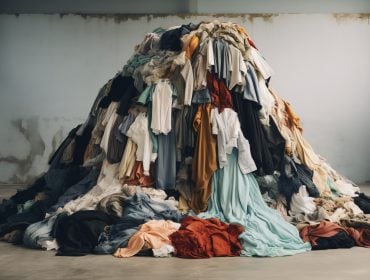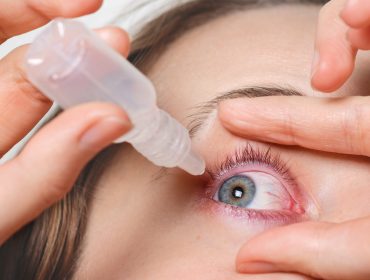Uncovering the Truth: The Link Between Belly Button Rash and STDs
Have you ever thought your belly button might reveal more than an innie or outie preference? Strange but true, this tiny body part can tell us about health issues we never imagined. For instance, a persistent rash around it may hint at something deeper like an STD or yeast infection.
Science shows unique bacteria thrive in these hidden crevices; some are found only in far-off lands. Curiosity leads to discovery with the Belly Button Biodiversity project’s sampling events where simply swabbing could uncover secrets of our personal ecosystem – and perhaps even signs of infections that demand attention.
Understanding Belly Button Rashes
A rash on your belly button could be a sign of an infection. You might find it red, sore, or itchy. Sometimes the cause is simple: dirt builds up and germs grow in that spot.
But other times, it’s more serious like an STD or yeast issue. You share your body with many bacteria; most are harmless or even helpful to you. Yet some can mix badly with your skin and lead to trouble down there, especially if not kept clean properly.
Stay sharp on cleaning well but don’t obsess unless rashes form often for you. A clear navel means lesser odds for future pain spots! So yes, an odd circular rush appears near your navel? It may just scream out a hidden health cry needing attention, or perhaps signal deeper issues lurking under those little treasures in every crease.
STDs and Your Navel Area
STDs can affect many body parts, even your navel. For instance, a yeast infection might show up as an itchy rash in this spot. It’s not just fungi; bacteria play their part too.
Consider Hepatitis B: caused by a tricky bacterium that appears under the microscope like strings of fish or railroad lines – hard to grow outside the human body but significant inside. If you see odd rashes around your belly button, get checked out, it could be more than simple irritation; it might signal something like Hepatitis B or another STD working beneath the surface. Keep an eye on any unusual changes and consult with health experts promptly for peace of mind and well-being.
Circular Rash: Cause for Concern?
If you spot a red, itchy rash in your belly button area, watch out. It might be from candidiasis – that’s a yeast infection on the skin. Yeast lives on our skin but usually causes no harm.
Trouble starts when Candida yeast gathers in moist spots like your navel and digs into the skin. This kind of issue loves hot weather or tight clothes because they raise warmth and dampness where this fungus thrives. Keep clean; change wet or sweaty outfits to stop it from setting up shop there.
You won’t smell much unless another condition called intertrigo steps in, mixing heat, moisture, rubbing skin together creating an unwanted scent.
Identifying an STD-Related Abdominal Rash
If you spot a rash around your belly button, it’s smart to take note. This could signal an STD like herpes or syphilis that often present sores on the skin’s surface. A ring-like sore can suggest early stage syphilis, while clusters of blisters might point towards genital herpes extending upwards.
Unlike typical yeast infections which stay put in one area and cause itching inside the navel, STD related rashes tend to spread out and may be accompanied by other symptoms such as fever or muscle aches. Remember, these signs demand attention; see your doctor for testing swiftly if they appear.
Yeast Infections Inside the Navel
Your belly button can get infected, a real risk if it’s not kept clean and dry. This tiny spot, the umbilicus can harbor bacteria and fungi. Think yeast; that’s common in these infections too!
If your navel turns red, starts itching or peeling, you might have candidiasis, a fungal invasion by Candida yeast. Let me tell you: keep that area dry after every wash to stop an infection from setting in. A cotton swab helps with this big time!
And what about tight clothes? They trap moisture right where it shouldn’t be. Be smart, if things look odd down there or pain kicks in, it’s doctor time.
Distinguishing Between Common Irritations and STDs
When you spot a rash around your belly button, it’s easy to worry. Could this be an STD? Some rashes may just itch or look red; others might hurt.
Yet not all are linked to STDs. Maybe from soap or clothes that rub too much – nothing scary there. But here’s where attention matters: symptoms like sores in the genital area could point towards herpes, while bumps near private parts hint at HPV – both serious infections needing care by doctors right away.
Don’t ignore signs thinking they’ll pass; some people show no sickness yet still need checks and help fast, the risk of harm is real without treatment.
Treatment Options for Umbilical Skin Conditions
If you’re dealing with a belly button rash, it might be an umbilical granuloma. It’s common in young kids and looks like small red tissue that stays after the cord falls off. Some individuals choose silver nitrate but there’s another way: simple salt treatment!
No need for doctors; this do-it-yourself method works well at home. Studies show using table salt gets rid of these bumps without bad effects or them coming back. Just apply dry salt to the area – it dries out the bump safely by pulling water from it.
So remember, if your doctor agrees, try kitchen salt on that stubborn navel issue!
You might not link a belly button rash with STDs, yet sometimes the two are related. Certain infections can show up as skin issues far from where you’d expect them. If an odd rash around your navel pops up, don’t just brush it off – get checked out.
STDCheck provides discreet tests for peace of mind and clear next steps if there’s a connection found between that irritating rash and any underlying STDs, so trust in taking prompt action to stay on top of your health.
Medically Reviewed by Colleen Ryan, MD on May 8, 2024
Secure and Confidential
STD testing services
The fastest results possbile - available in 1 to 2 days

Tagged
Categorized As
Author: STD Check Editorial Team
At STDCheck.com, we go to great lengths to ensure quality content. We’re using our own collection of data. It is not bought or made up for “click-bait” purposes. We don’t entice traffic with cheesy graphics or raunchy headlines. Our information is to promote STD testing, educate people, let go of social stigmas, and bring awareness. We also provide a completely confidential atmosphere through private testing. When we produce an article, it is fact-based. We check it with medical advisors that approve it. Our staff consists of doctors and other medical professionals who peer review the content we make available on STDCheck.com. From all over the world, we have sourced the best and the brightest content developers, including medical professionals, marketing engineers, data scientists, content specialists, and media relations.




